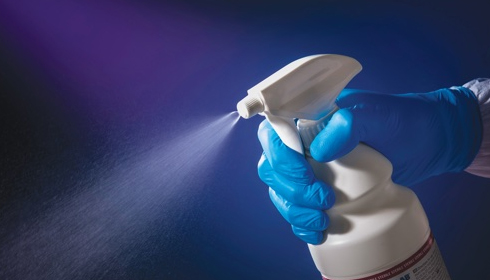
Hong Kong Engineers Discover Rapidly Degrading Disinfectant
Researchers at Hong Kong University of Science and Technology (HKUST) have made a big breakthrough in environmental chemistry by discovering a novel, eco-friendly disinfectant. This new molecule, called 2,6-dichlorobenzoquinone (2,6-DCQ), is very good at getting rid of a wide range of infections. It also breaks down faster and is safer for aquatic environments than regular disinfectants.
The study, published in Nature Communications recently and led by Prof. Zhang Xiangru of HKUST's Department of Civil and Environmental Engineering, addresses an important environmental issue. Chloroxylenol, a commonly used disinfectant, has sparked concern due to its high chemical stability and widespread use, which pose eco-toxicological hazards in water systems. Prof. Zhang, who has extensively studied disinfection byproducts (DBPs), discovered similarities between chloroxylenol and other halo-phenolic DBPs explored by his team. These DBPs demonstrated the potential for rapid deterioration by sun photolysis, motivating the hunt for a more sustainable disinfectant.
Prof. Zhang's team investigated ten different DBPs for their capacity to inactivate pathogens such as E. coli, Staphylococcus aureus, Candida albicans, and bacteriophage MS2. Their findings showed that 2,6-DCQ was 9–22 times more efficient than chloroxylenol. Furthermore, 2,6-DCQ exhibited significantly less developmental toxicity to marine polychaete embryos than chloroxylenol, with a 31-fold decrease in toxicity two days after discharge into saltwater.
"We discovered that the selected DBP exhibited substantially stronger antimicrobial efficacy than chloroxylenol and that its concentration and associated developmental toxicity in receiving seawater decreased rapidly, even in darkness," Prof. Zhang reported. His findings highlight the critical need for effective, ecologically friendly disinfectants, particularly considering the vast environmental impact of chloroxylenol. "Chloroxylenol has been frequently detected in aquatic environments, with concentrations reaching up to 10.6 μg/L in river water in Hong Kong."Toxicological investigations have shown that chloroxylenol has negative impacts on aquatic creatures, such as endocrine disruption, embryonic death, and deformities."
The introduction of 2-DCQ represents a possible solution to the global demand for cleaner disinfectants. The compound's versatility offers possible applications in a variety of industries, including personal care products, medical scrubs, food processing equipment, and public cleanliness. Prof. Zhang sees broader implications for this research, highlighting the possibility of generating new green commercial goods by exploiting seawater's alkaline composition.
"This innovative study not only provides a potential solution to better support human biosecurity while prioritising environmental sustainability but also carries significant implications for the development of green disinfectants and other green industrial products," says Prof. Zhang. Future study objectives include employing machine learning approaches to investigate the correlations between disinfection efficiency and halophenol degradation, to refine and develop optimal disinfectants.